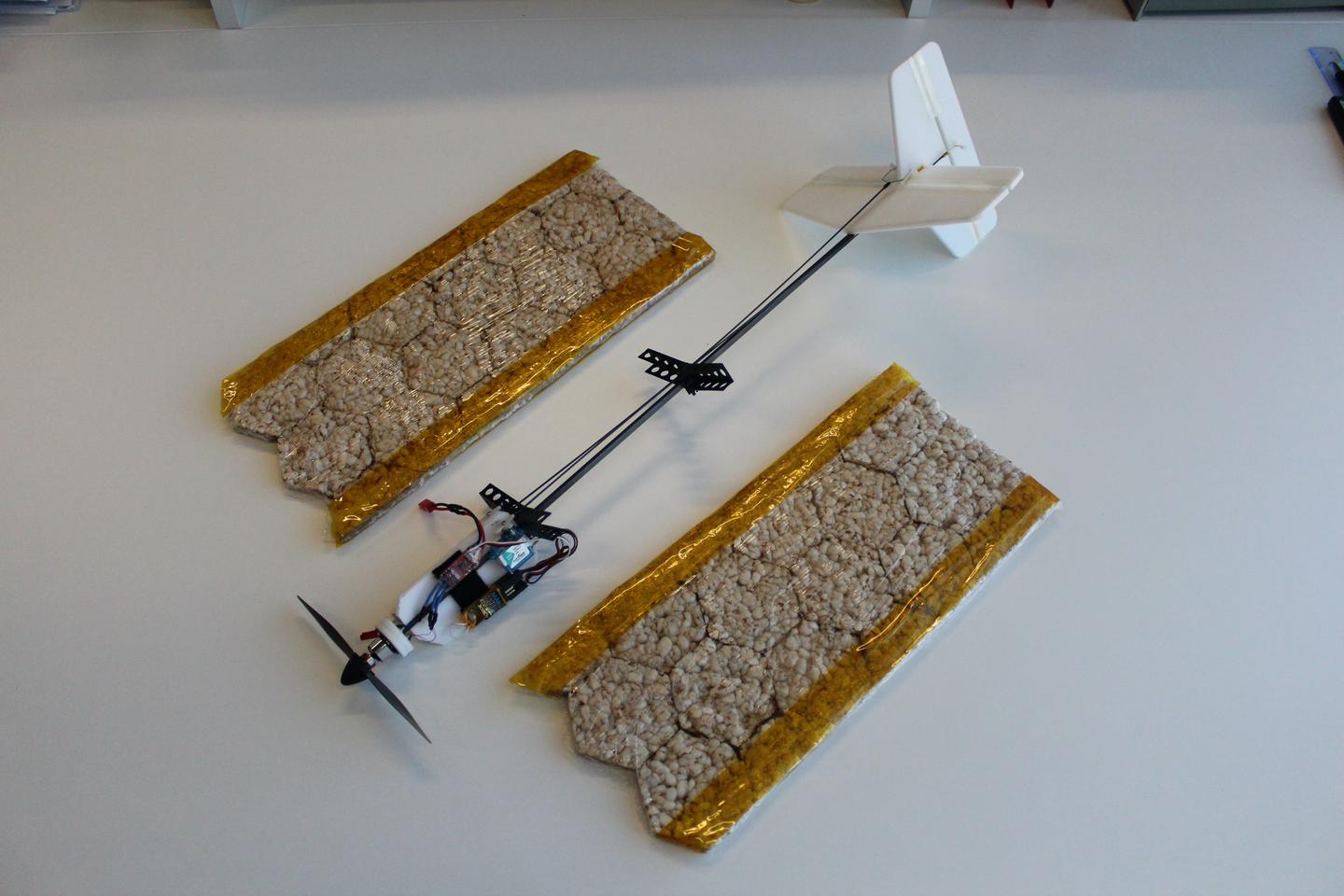Imagine if someone such as a stranded mountain climber needed food, but could initially only be reached by drone. Scientists have developed a proof-of-concept system of getting that food to them, in the form of a drone with edible wings.
First of all, there are already various groups using multicopter drones to deliver packages of food from stores or restaurants to clients’ homes. Why not just use one of those?
Well, while such drones have enough battery range for use within cities, they might not be able to cover the long distances that would be involved in getting food to people lost at sea, in the wilderness, or in other remote locations. A longer-range fixed-wing drone would be better for that purpose, although according to scientists from Switzerland’s EPFL research institute, commercial models can generally only carry about 10 to 30% of their own mass as a payload.
In an effort to increase that percentage, an EPFL team led by postdoctoral researcher Bokeon Kwak set about designing a fixed-wing drone that was actually partially edible. And no, it wouldn’t be reusable – it would make a one-way trip to the person in need, providing them with sustenance until they could be reached by rescuers.
The scientists focused their efforts on the wings, as they usually occupy the largest volume on a fixed-wing drone. If providing food weren’t an issue, those wings would normally be made of a light but strong material such as expanded polypropylene (EPP) foam. After some experimentation it was decided that puffed rice cakes provided a good edible alternative, as their mechanical properties are similar to those of EPP.

Bokeon Kwak
In order to build the rectangular wings, the puck-shaped cakes were laser-cut into hexagonal pieces, which were then glued together along the edges using an edible gelatin. Corn starch and chocolate were also tried as adhesives, but the gelatin proved to be stronger. Once assembled, the wings were covered in a removable non-edible plastic, to protect the rice cake material from humidity.
The resulting model has a wingspan of 678 mm (26.7 in) and it does indeed fly – at a speed of 10 m (33 ft) per second – and carries 50% of its own mass as an edible payload. Additionally, the researchers estimate that it could carry 80 grams of water in an onboard container.
Its two wings pack a combined 300 kilocalories of food energy, which is roughly equivalent to one serving of breakfast. Needless to say, a larger version – or multiple smaller drones sent to one location – could provide a greater amount. Further research will focus on making more parts of the drone edible, and on boosting the nutritional value of the edible material.
“Until now, the amount of food that existing drones could carry was restricted to the payload,” the team stated in a paper that was presented last week at the IEEE/RSJ International Conference on Intelligent Robots and Systems (IROS) in Kyoto. “However, an edible drone can distinctly overcome this payload limitation, owing to the recreation of some body structures with food materials.”
Source: EPFL via IEEE Spectrum
Source of Article


